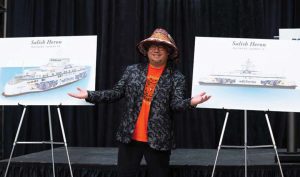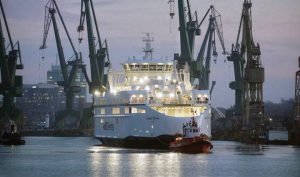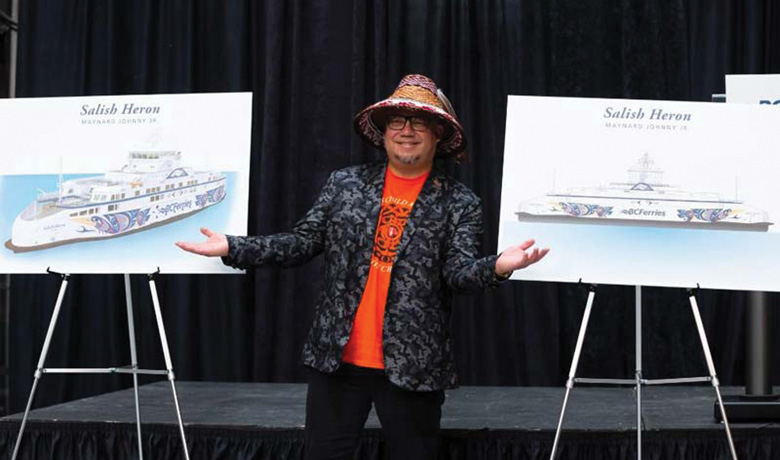
Later this month, BC Ferries’ fourth and final Salish class vessel, the Salish Heron, is set to arrive in Victoria, British Columbia, where it’s expected to begin service later this year.
The vessel began its more than 10,000-nautical-mile trek from Remontowa Shipbuilding S.A. in Gdansk, Poland on Dec. 22.
The ship was scheduled to sail about 10,440 nautical miles across the Atlantic Ocean, through the Panama Canal and up the Pacific Coast of North America, arriving at Victoria’s Ogden Point for inspection.
It is then expected to move to BC Ferries’ Fleet Maintenance Unit in Richmond, BC for final preparations, including the application of the exterior artwork designed by artist Maynard Johnny Jr., a member of the Coast Salish group of indigenous peoples of the Pacific Northwest.

“I have created a Salish Heron using traditional Salish design with contemporary colors that have become my signature as a Coast Salish artist,” Johnny Jr. explained. “The design reflects the long beak and long neck of a Great Blue Heron, and it’s wing, tail feathers and talon. I wanted to create a Salish Heron that was fascinating to the viewer and was obvious to the eye yet kept a flow of design and color.”
“We are honored to display his designs on our vessel, the Salish Heron,” BC Ferries President and CEO Mark Collins said of Johnny Jr.
BC Ferries’ Salish vessels feature Indigenous work that, according to the company, acknowledges “the Coast Salish sailors as original navigators of these coastal waters.”
Like the three other Salish class vessels —the Salish Orca, Salish Eagle and Salish Raven—the Salish Heron can accommodate up to 138 vehicles and 600 passengers and crew. All four vessels run on liquefied natural gas and feature a hull design that generates a small wake and electric propulsion and structural design that lead to a quiet ride, the ferry agency said.
BC Ferries has said that its Salish Class ferries are built to support the company’s goal of being both efficient and environmentally responsible. Some key features of the vessels include:
- The use of natural gas as the primary fuel.
- Reduces GHG emissions by 15% – 25%.
- Reduces sulphur oxides by over 85%.
- Reduces nitrogen oxides by over 50%.
- Near elimination of particulate matter.
- Electric propulsion that eliminates gear boxes and shaft.
- Twin propellers that reduce cavitation.
- Engine mounts that isolate structure-borne noise.
- A hull design that creates a very small wake.
- Engine management systems that reduce machinery running time.
“We are looking forward to welcoming Salish Heron into service,” Capt. Jamie Marshall, BC Ferries’ Vice President, Shipbuilding & Innovation, said. “Given our presence in coastal waters, we are determined to conduct our operations in an environmentally responsible way in our transition to a lower carbon future.”

